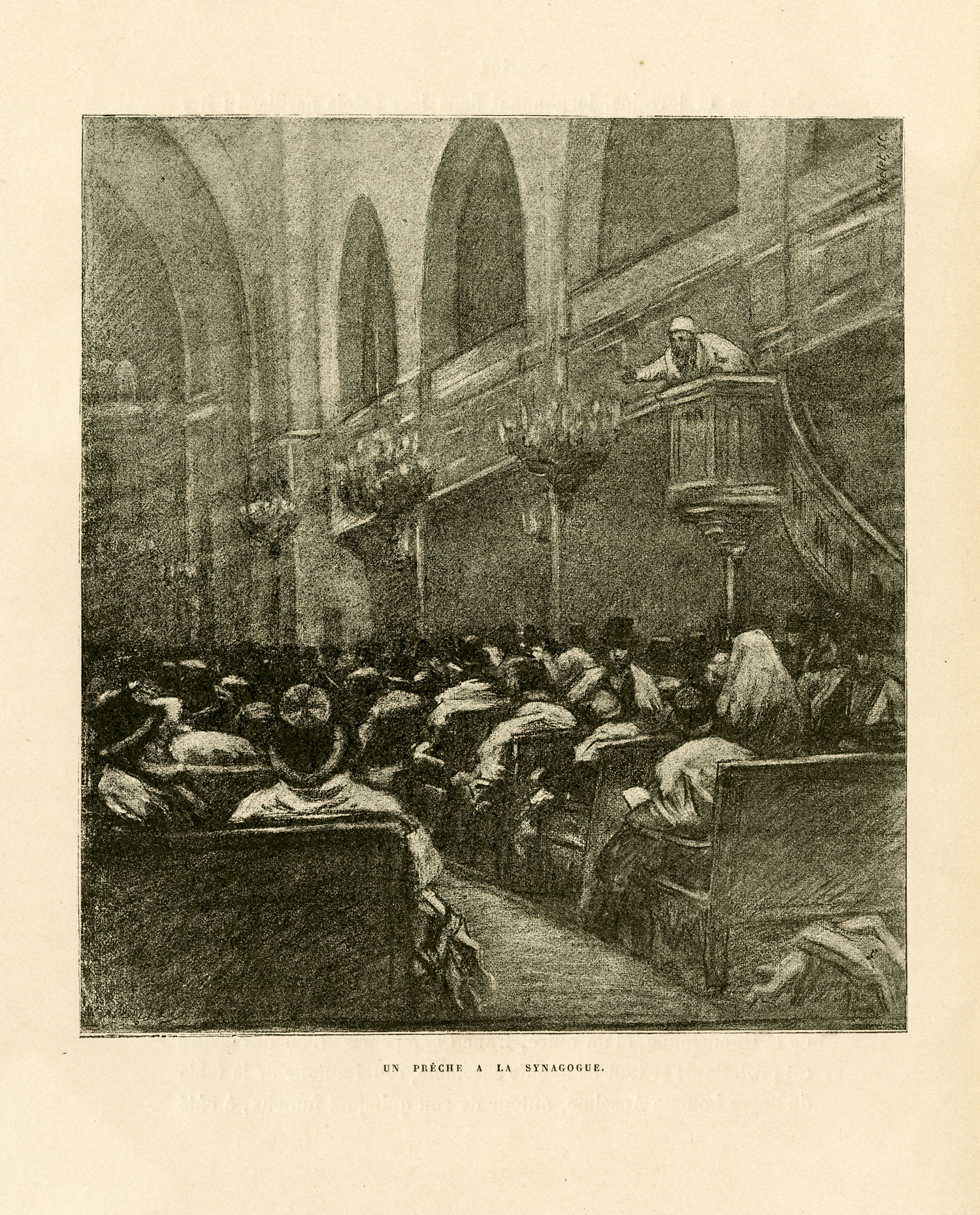This illustration by French artist Alphonse Levy (1843–1918), the prolific illustrator of French Jewish life, shows a large, impressive synagogue where a rabbi or visiting preacher is delivering a sermon to the congregation from a raised pulpit set midway up the main nave of the sanctuary and attached to a wall near the women’s gallery. Adopted from the churches of the Catholic preaching orders of Franciscans and Dominicans, this type of pulpit facilitated the development of an important 19th-century trend, the sermon, at a time when another trend, the removal of the bimah from the sanctuary center and its combination with the ark, was also taking place.
In an age before electronic amplification, clergy needed to have strong voices and to position themselves in places where their words would carry to the audience. Though sermons are known to have been common in many Jewish communities from at least the late Middle Ages on, they were not regulated by any formal customs until the consistent and more standardized inclusion of sermons as part of Sabbath and festival services developed in the 19th century. In France and Germany, this was due in part to the expectations of governmental religious authorities whose regulations helped redefine the roles of rabbis and other religious leaders. Sermons were no longer primarily explications of the weekly Torah readings or other religious texts, but would include moral instruction and commentary on contemporary events. Pulpits were used for other types of speaking, too, including appeals for charity, community announcements, and the recitation of government and community statutes.
